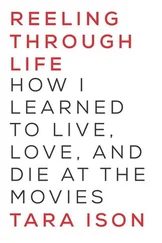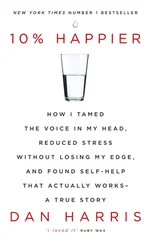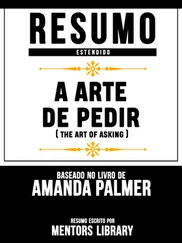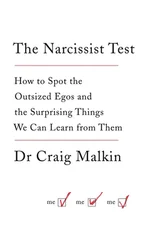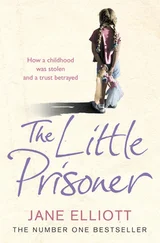Sometimes I would get home and have a nice little breakdown, having no idea what to do with all the loneliness I’d collected. I tried to capture it in a lyric, years later, in a song called “Berlin” (my chosen stripper name):
It’s hard to work on an assembly line of broken hearts
Not supposed to fix them, only strip and sell the parts
People would look straight into your crotch.
But nobody would look you in the eye.
And that drove me crazy.
• • •
Sometimes people would hold my gaze and try to give the flower back to The Bride, as if to somehow repay me for the flower I had just given them.
And I would gesture:
No no, it’s yours to keep .
A few times people came back to my spot, fifteen minutes later, to lay a whole store-bought bouquet at my feet. Some people would pick flowers or rhododendron stems from Harvard Yard and hand me their gift, and then I’d give them one of my flowers, and we’d keep trading, and it would all get really funny and confusing.
On a good day, I couldn’t tell who was giving what to whom.
• • •
Asking is, at its core, a collaboration.
The surgeon knows that her work is creative work. A machine can’t do it because it requires human delicacy and decision making. It can’t be done by an automaton because it requires critical thinking and a good dose of winging-it-ness. Her work requires a balance of self-confidence and collaboration, a blend of intuition and improvisation.
If the surgeon, while slicing that vulnerable brain, hits an unexpected bump in the process and needs to ask the person beside her for something essential—and quickly—she has absolutely no time to waste on questions like:
Do I deserve to ask for this help?
Is this person I’m asking really trustworthy?
Am I an asshole for having the power to ask in this moment?
She simply accepts her position, asks without shame, gets the right scalpel, and keeps cutting. Something larger is at stake. This holds true for firefighters, airline pilots, and lifeguards, but it also holds true for artists, scientists, teachers—for anyone, in any relationship.
Those who can ask without shame are viewing themselves in collaboration with—rather than in competition with—the world.
Asking for help with shame says:
You have the power over me .
Asking with condescension says:
I have the power over you .
But asking for help with gratitude says:
We have the power to help each other .
• • •
Sometimes I had to sneeze. Statues should not sneeze. It became a dramatic internal activity: I’d spend an entire minute just concentrating on the feeling in my throat and nose, playing with the strange twilight zone of sneeze-not-sneeze.
And sometimes I’d just fucking sneeze. Nothing to be done.
It was a formidable Zen practice.
Sometimes a mosquito or a fly or a bee would land on my cheek, and we’d just sort of hang out together.
Sometimes the sun would beat down directly on my face and a bead of sweat would cling to the tip of my nose until it got fat enough to start dripping into the street.
Sometimes I’d have to wipe my nose because I had a cold. Or because it was cold.
I would be so freezing sometimes that I would hyperextend the dance of flower-giving and draw out the entire gesture arduously, so some poor person would wait there patiently for minutes while I enacted a bizarre-looking, overdramatic, avant-garde modern dance, trying to warm up my body.
This would culminate in the eventual giving of the flower and a climactic flourish in which, with my gloved hand, and as subtly as possible, I could also wipe away the long, graceful string of clear snot that was hanging out of my white-painted nose.
• • •
The art of asking can be learned, studied, perfected. The masters of asking, like the masters of painting and music, know that the field of asking is fundamentally improvisational. It thrives not in the creation of rules and etiquette but in the smashing of that etiquette.
Which is to say: there are no rules.
Or, rather, there are plenty of rules, but they ask, on bended knees, to be broken.
• • •
Gus, our boss at Toscanini’s Ice Cream, was a true patron of the arts—a perfect example of the sort of person who lives a life committed to the creativity of patronage, and expands the boundaries of what we are empowered to give one another.
He was a beloved local Celebrity Ice Cream Chef, obsessively passionate about music, culture, Cambridge politics, and new frontiers in frozen dessert making. He would devise, like an inspired mad scientist, ice creams and sorbets made out of pink peppercorns, basil, and beer.
Gus was an avid connector: He printed information about local dance companies on the store’s takeaway coffee cups. He gave away crates of ice cream to science activists from MIT. He provided ice-cream gift certificates to silent auctions to rebuild city parks. He was like an ice-cream Santa Claus. It was almost a rite of passage for a young indie musician in Boston to work at either Toscanini’s or Pearl Art & Craft (the other flexible-schedule job in Cambridge that didn’t consider it a customer service liability to rock a blue Mohawk behind the counter).
Even though I’d hit the jackpot with my newfound hundred-dollar-a-day street-performance career, I still needed a place to store my bridal rig. Carting it back and forth between my crappy apartment and the store would have been impossible. So I kept one weekly shift at the ice-cream shop, plucked up my courage, and casually asked Gus:
Um, do you mind if I keep my bride stuff in the basement? It’s just a couple of milk crates and some clothes and makeup and stuff .
Sure! said Gus, cheerfully. You can store the creepy bride down there . (That’s what he called her.) Don’t scare the customers .
The basement of Toscanini’s was an ancient, dank cave with a low-slung ceiling tangled in pipes and a brick-and-dirt floor, crammed with cardboard boxes containing cups, spoons, and napkins. There was a tiny employees-only bathroom and a huge walk-in freezer where the five-gallon ice-cream tubs were kept. (That walk-in freezer became a very handy subzero reverse-sauna after a long, hot day statue-ing in the sun, and I’d often freak the bejeezus out of employees who accidentally stumbled upon me hanging out in there, naked, when they came in to restock tubs of French Vanilla.)
I got the entire bridal transformation down to about nine minutes: I’d sit down on the toilet in the basement, powder-whiten my face, pull the wedding dress over my jeans and boots, tuck my hair into a wig cap, and arrange the veil atop my head with a mess of bobby pins. Then I’d pull on the long white gloves, gather up my crates and giant train of gown into my arms, ascend the basement stairs, exchange salutes with my co-workers behind the counter, and bask in the what-the-fuck expressions on the faces of the ice-cream customers as I passed through the shop like a Dickensian hallucination and headed out onto the street.
All I have to say is: thank Christ I didn’t work at Baskin-Robbins.
• • •
My boyfriend Joseph would stop by sometimes to watch me statue-ing. He was an actor.
He would hang back for a while, then ceremoniously put his dollar into the hat with a flourish, and look deep into my eyes while I dramatically picked out his flower. Then I would gesture to him, as the crowd watched, curious about this stranger who was getting extra attention. I would gesture to him to come closer, then coyly withhold my flower. People would laugh, and I would gesture to him to come right up to my face, then I’d kiss him, slowly, on the lips, and then tuck the flower in his hair.
Читать дальше

